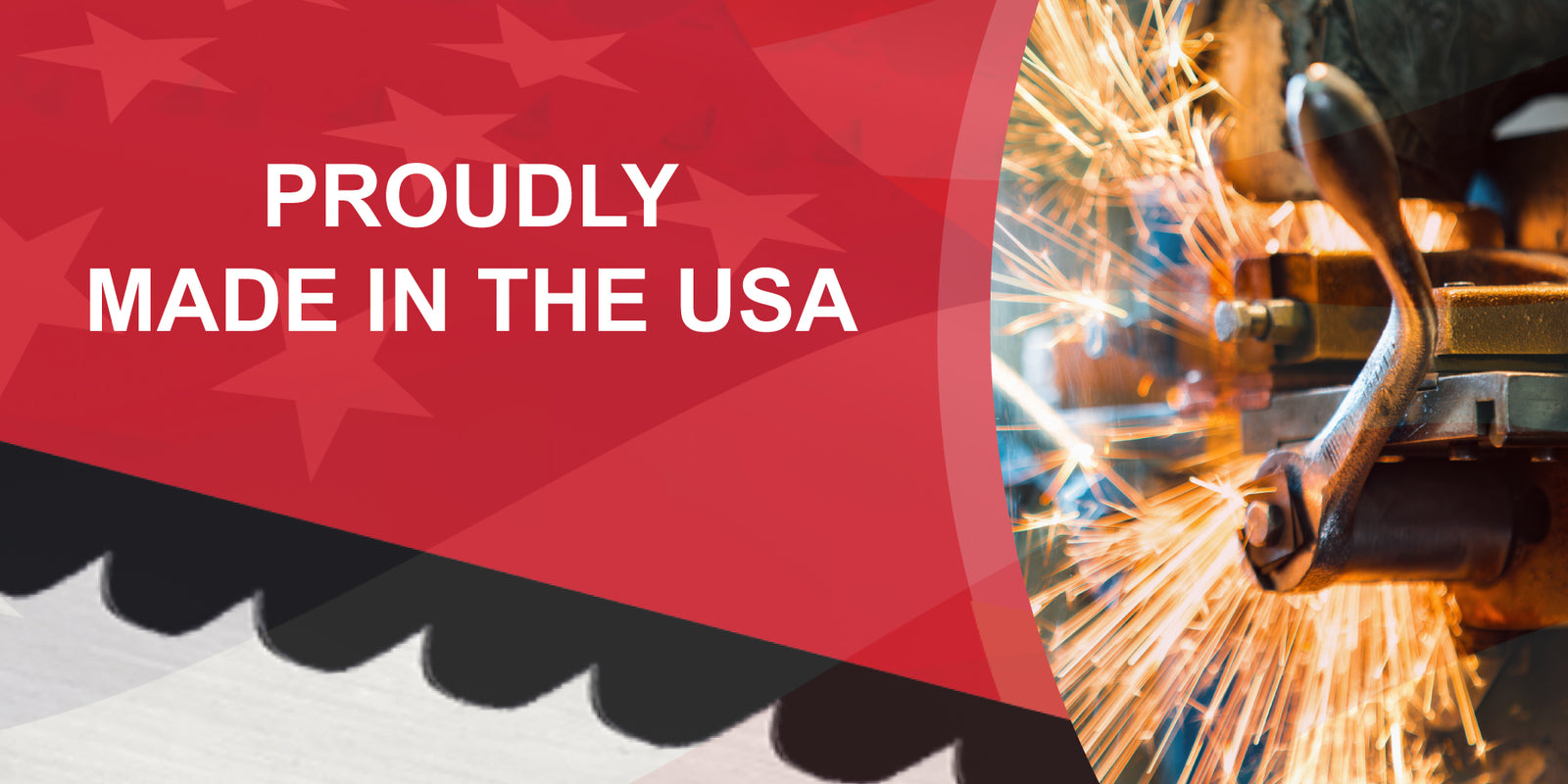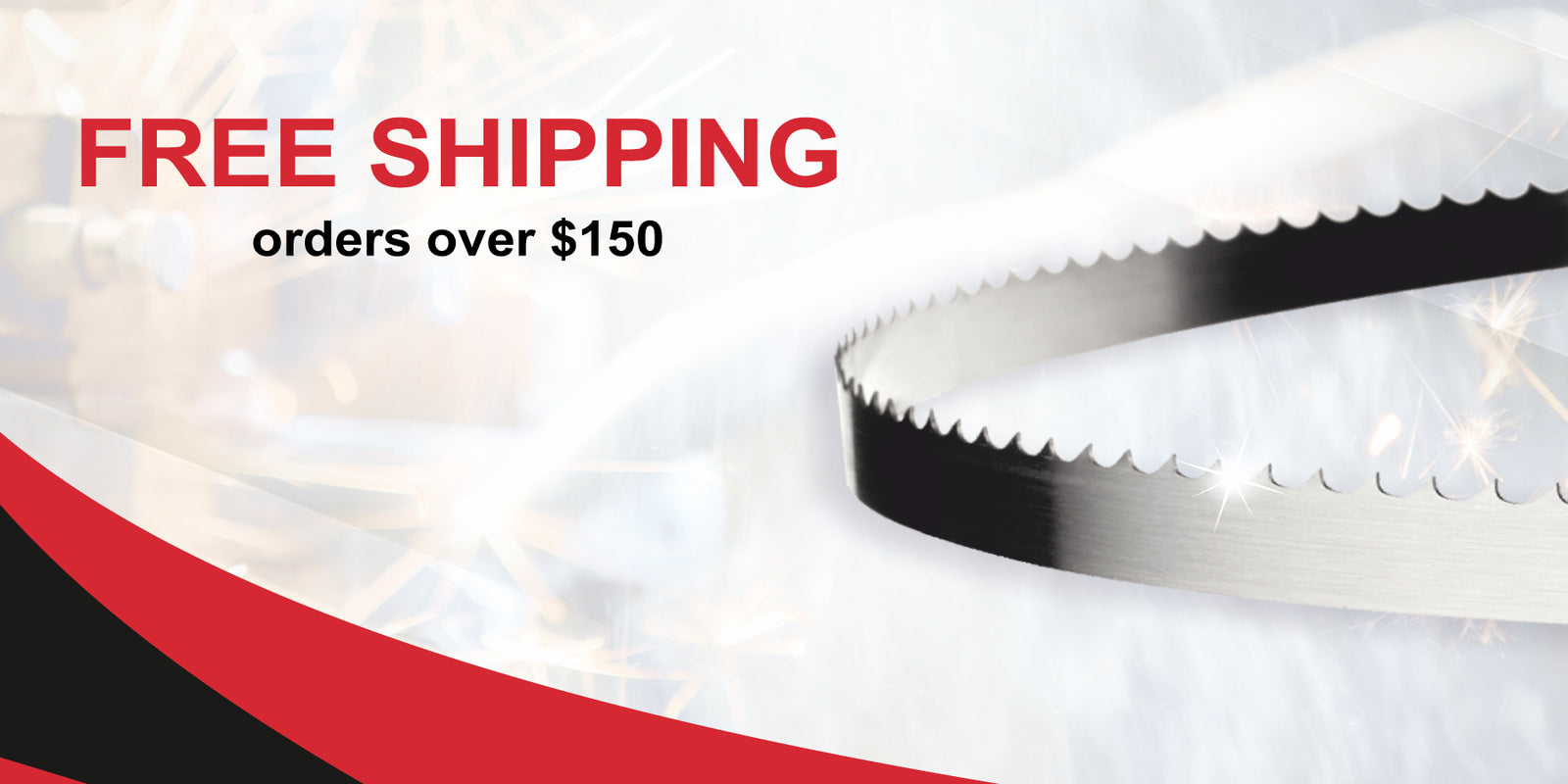Use Carbon Tool Steel or Bimetal Blades
Small to large, horizontal or vertical, metal cutting band- saws use either Carbon Tool Steel or Bimetal bandsaw blades. Carbon Tool Steel blades are more economical to purchase. Carbon Tool Steel blades will cut mild steel if used at speeds under 200 feet per minute (1pm) for best results, preferably with coolant. If you are sawing in a production setting, your saw is in good repair and adjusted correctly, and want the longest life blade available, then you should use Bimetal bandsaw blades. Bimetal blades cost more than carbon blades, but are generally more economi- cal to operate in the long run, because they can outlast carbon blades by up to 10 times if used property. Also, they are capable of cutting harder materials, such as stainless steel.





